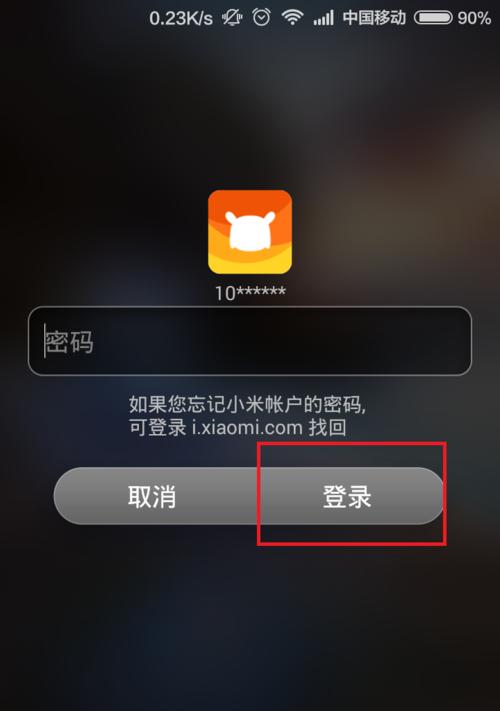 Mobile Tutorial
Mobile Tutorial
 Android Phone
Android Phone
 Android phone flashing and unlocking guide (from zero basics to one-click flashing)
Android phone flashing and unlocking guide (from zero basics to one-click flashing)
Android phone flashing and unlocking guide (from zero basics to one-click flashing)
With the popularity of Android smartphones, while we enjoy convenience, we also face restrictions imposed by mobile phone manufacturers, which limits our ability to fully realize the potential of our devices. In order to break these limitations, flashing and unlocking has become an effective solution. In order to help more users master the knowledge of flashing and unlocking, PHP editor Banana has specially written this tutorial, which will start from scratch and explain step by step the methods and techniques of flashing and unlocking Android phones. Through this article, you will fully understand the principles, processes and precautions of flashing and unlocking, helping you to easily unlock your phone and enjoy more freedom and functions.

What is flash unlock?
We will explain in detail what rooting and unlocking is and its impact on our use of Android phones in this paragraph. As well as lifting manufacturers' restrictions on mobile phones so that they can obtain more permissions and functions, flashing and unlocking refers to modifying the operating system of the mobile phone.
Why do you need to flash to unlock?
We will discuss why it is necessary to flash to unlock, in this paragraph. Uninstalling pre-installed applications and flashing to unlock can help us personalize the phone interface, install third-party applications and ROMs, etc., and improve phone performance. It also allows us to try out the latest Android versions and features, at the same time.

Risks and precautions of flashing and unlocking
We will discuss in detail the possible risks and precautions of flashing and unlocking in this paragraph. Be sure to back up important data, lose warranty, and confirm the phone model and version before flashing and unlocking, and choose a reliable flashing tool. Issues such as data loss and flashing and unlocking may cause the phone to become bricked.
Back up mobile phone data
We will introduce in detail how to backup mobile phone data in this paragraph. To prevent data loss during the flashing process, backing up phone data can protect important information. Computer software or dedicated backup application to backup data, we can use cloud services.
Understanding the mobile phone model and version
We will describe how to understand the mobile phone model and version in this paragraph. We need to accurately understand the model and version of our mobile phone. Different mobile phone models and versions may require different flashing tools and flashing tutorials, so before flashing the phone.

Choose the right flashing tool
We will introduce how to choose the right flashing tool in this paragraph. We need to choose the appropriate flash tool according to our mobile phone model and version, such as TWRP. There are many flash tools to choose from, including Fastboot, Odin, etc.
Get the flashing tutorial and ROM
We will tell how to get the flashing tutorial and ROM in this paragraph. The ROM is the target operating system version for our flashing. The flashing tutorial can help us perform the flashing operation correctly. The community can obtain flashing tutorials and ROMs through various channels, such as official forums, and third-party websites.
Unlock the Bootloader of your phone
We will introduce in detail how to unlock the Bootloader of your phone in this paragraph. Unlocking it can pave the way for subsequent flashing operations. Bootloader is the program that loads the operating system when the phone starts. Different brands of mobile phones may have different methods for unlocking the bootloader.
Entering Flash Mode
We will describe how to enter Flash Mode in this paragraph. Only after entering the flash mode, which is a special startup mode, can we perform the flash operation. The method of entering flash mode varies depending on the make and model of your phone.
Installing TWRPRecovery
We will introduce in detail how to install TWRPRecovery in this paragraph. It can help us flash custom ROMs and perform other flashing operations more conveniently. TWRPRecovery is a commonly used flashing tool and a carrier of flashing tutorials.
Flashing a custom ROM
We will describe how to flash a custom ROM in this paragraph. Can provide more functions and performance optimization, custom ROM is an optimized and customized version of the Android operating system. And follow the flashing tutorial. When flashing a custom ROM, you need to pay attention to choosing a ROM that suits your phone.
Flash into Root permissions
We will introduce in detail how to flash into Root permissions in this paragraph. In order to perform more customization and optimization operations, Root permissions can allow us to obtain higher mobile phone permissions. And follow the rooting tutorial. To flash the Root permissions, you need to choose the Root tool suitable for your mobile phone version.
FAQ
We will answer some frequently asked questions about rooting and unlocking in this paragraph. Will flashing and unlocking my phone cause my phone to become bricked? How to restore factory settings? How to keep your phone warranty? etc.
Be careful and enjoy the fun of flashing and unlocking
We will emphasize the caution in the process of flashing and unlocking. In this paragraph, always be cautious and rational, ensure the security of your mobile phone and data, and encourage readers to enjoy the fun of flashing and unlocking.
Some key steps in the flashing process, as well as the functions and advantages that may be obtained after flashing, we understand the basic concepts, risks and precautions of flashing and unlocking Android phones through the introduction of this article. Under the premise of rationality, try flashing and unlocking according to your own needs. I hope readers can be cautious and get a better Android phone experience.
The above is the detailed content of Android phone flashing and unlocking guide (from zero basics to one-click flashing). For more information, please follow other related articles on the PHP Chinese website!

Hot AI Tools

Undresser.AI Undress
AI-powered app for creating realistic nude photos

AI Clothes Remover
Online AI tool for removing clothes from photos.

Undress AI Tool
Undress images for free

Clothoff.io
AI clothes remover

AI Hentai Generator
Generate AI Hentai for free.

Hot Article

Hot Tools

Notepad++7.3.1
Easy-to-use and free code editor

SublimeText3 Chinese version
Chinese version, very easy to use

Zend Studio 13.0.1
Powerful PHP integrated development environment

Dreamweaver CS6
Visual web development tools

SublimeText3 Mac version
God-level code editing software (SublimeText3)

Hot Topics
 1386
1386
 52
52
 How to use sql datetime
Apr 09, 2025 pm 06:09 PM
How to use sql datetime
Apr 09, 2025 pm 06:09 PM
The DATETIME data type is used to store high-precision date and time information, ranging from 0001-01-01 00:00:00 to 9999-12-31 23:59:59.99999999, and the syntax is DATETIME(precision), where precision specifies the accuracy after the decimal point (0-7), and the default is 3. It supports sorting, calculation, and time zone conversion functions, but needs to be aware of potential issues when converting precision, range and time zones.
 How to create oracle database How to create oracle database
Apr 11, 2025 pm 02:36 PM
How to create oracle database How to create oracle database
Apr 11, 2025 pm 02:36 PM
To create an Oracle database, the common method is to use the dbca graphical tool. The steps are as follows: 1. Use the dbca tool to set the dbName to specify the database name; 2. Set sysPassword and systemPassword to strong passwords; 3. Set characterSet and nationalCharacterSet to AL32UTF8; 4. Set memorySize and tablespaceSize to adjust according to actual needs; 5. Specify the logFile path. Advanced methods are created manually using SQL commands, but are more complex and prone to errors. Pay attention to password strength, character set selection, tablespace size and memory
 How to delete rows that meet certain criteria in SQL
Apr 09, 2025 pm 12:24 PM
How to delete rows that meet certain criteria in SQL
Apr 09, 2025 pm 12:24 PM
Use the DELETE statement to delete data from the database and specify the deletion criteria through the WHERE clause. Example syntax: DELETE FROM table_name WHERE condition; Note: Back up data before performing a DELETE operation, verify statements in the test environment, use the LIMIT clause to limit the number of deleted rows, carefully check the WHERE clause to avoid misdeletion, and use indexes to optimize the deletion efficiency of large tables.
 How to add columns in PostgreSQL?
Apr 09, 2025 pm 12:36 PM
How to add columns in PostgreSQL?
Apr 09, 2025 pm 12:36 PM
PostgreSQL The method to add columns is to use the ALTER TABLE command and consider the following details: Data type: Select the type that is suitable for the new column to store data, such as INT or VARCHAR. Default: Specify the default value of the new column through the DEFAULT keyword, avoiding the value of NULL. Constraints: Add NOT NULL, UNIQUE, or CHECK constraints as needed. Concurrent operations: Use transactions or other concurrency control mechanisms to handle lock conflicts when adding columns.
 What are the oracle11g database migration tools?
Apr 11, 2025 pm 03:36 PM
What are the oracle11g database migration tools?
Apr 11, 2025 pm 03:36 PM
How to choose Oracle 11g migration tool? Determine the migration target and determine the tool requirements. Mainstream tool classification: Oracle's own tools (expdp/impdp) third-party tools (GoldenGate, DataStage) cloud platform services (such as AWS, Azure) to select tools that are suitable for project size and complexity. FAQs and Debugging: Network Problems Permissions Data Consistency Issues Insufficient Space Optimization and Best Practices: Parallel Processing Data Compression Incremental Migration Test
 How to clean all data with redis
Apr 10, 2025 pm 05:06 PM
How to clean all data with redis
Apr 10, 2025 pm 05:06 PM
How to clean all Redis data: Redis 2.8 and later: The FLUSHALL command deletes all key-value pairs. Redis 2.6 and earlier: Use the DEL command to delete keys one by one or use the Redis client to delete methods. Alternative: Restart the Redis service (use with caution), or use the Redis client (such as flushall() or flushdb()).
 How to add multiple new columns in SQL
Apr 09, 2025 pm 02:42 PM
How to add multiple new columns in SQL
Apr 09, 2025 pm 02:42 PM
Methods to add multiple new columns in SQL include: Using the ALTER TABLE statement: ALTER TABLE table_name ADD column1 data_type, ADD column2 data_type, ...; Using the CREATE TABLE statement: CREATE TABLE new_table AS SELECT column1, column2, ..., columnn FROM existing_table UNION ALL SELECT NULL, NULL, ..., NUL
 How to recover data after SQL deletes rows
Apr 09, 2025 pm 12:21 PM
How to recover data after SQL deletes rows
Apr 09, 2025 pm 12:21 PM
Recovering deleted rows directly from the database is usually impossible unless there is a backup or transaction rollback mechanism. Key point: Transaction rollback: Execute ROLLBACK before the transaction is committed to recover data. Backup: Regular backup of the database can be used to quickly restore data. Database snapshot: You can create a read-only copy of the database and restore the data after the data is deleted accidentally. Use DELETE statement with caution: Check the conditions carefully to avoid accidentally deleting data. Use the WHERE clause: explicitly specify the data to be deleted. Use the test environment: Test before performing a DELETE operation.



